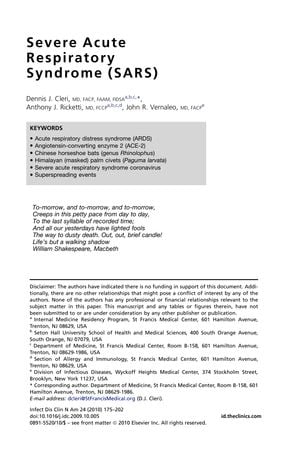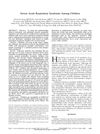Severe Acute Respiratory Syndrome (SARS)
March 2010
in “
Infectious Disease Clinics of North America
”

TLDR The document concludes that rapid identification, isolation, and strict infection control are crucial to manage SARS outbreaks.
The document from March 1, 2010, provides an extensive analysis of Severe Acute Respiratory Syndrome (SARS), detailing its spread, causative coronavirus (SARS-CoV), and impact on human health. It reports 8,447 cases and 813 deaths from the 2002-2003 outbreak, with a notable number of healthcare workers affected. The virus, originating from bats and transmitted via civets in markets, causes severe respiratory illness and has a high mortality rate, especially in older adults and those with acute respiratory distress syndrome (ARDS). The document outlines the pathology of SARS, including lung and small bowel viral presence, and identifies ACE-2 as a critical receptor for the virus. It also discusses the challenges in containing SARS due to its survival on surfaces, nosocomial and household transmission, and the absence of specific symptoms. Recommendations for containment include hygiene practices, isolation, and quarantine. Pregnant women with SARS face high mortality and risk of complications, while pediatric cases are generally mild. Complications can include pulmonary fibrosis, cardiovascular issues, and psychiatric disorders. Diagnostic methods include ELISA, immunofluorescent assay, and RT-PCR, with various treatments explored but no definitive therapy identified. The document emphasizes the importance of rapid identification, isolation, and strict infection control measures to manage SARS outbreaks.
